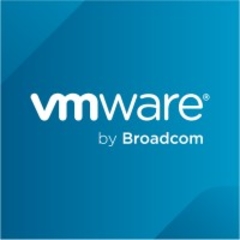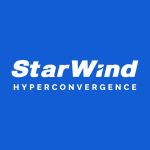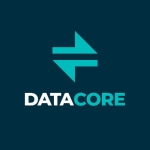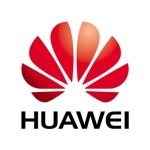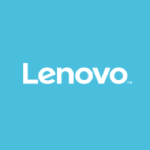Originally posted in Spanish at https://www.rhpware.com/2015/02/introduccion-vmware...
The second generation of Virtual SAN is the vSphere 6.0 that comes with sharing the same version number. While the jump from version 1.0 (vSphere 5.5) 6.0 to change really worth it occurred, as this second-generation converged storage integrated into the VMware hypervisor significantly increases performance and features that are based on a much higher performance and increased workloads scale business level, including business-critical applications and Tier 1 capital.

Virtual SAN 6.0 delivers a new architecture based entirely on Flash to deliver high performance and predictable response times below one millisecond in almost all business critical applications level. This is also achieved because in this version doubles the scalability up to 64 nodes per host and up to 200 VMs per host, as well as improvements in technology snapshots and cloning.
Performance characteristics
The hybrid architecture of Virtual SAN 6.0 provides performance improvements of nearly double compared to the previous version and 6.0 Virtual SAN architecture all-flash four times the performance considering the number of IOPS you get in clusters with similar workloads predictable and low latency.
As the hyper convergent architecture is included in the hypervisor efficiently optimizes the ratio of operations of I/O and dramatically minimizes the impact on the CPU, which leads to products from other companies. The distributed architecture based on the hypervisor reduces bottlenecks allowing Virtual SAN move data and run operations I/O in a much more streamlined and very low latencies, without compromising the computing resources of the platform and keeping the consolidation of the VM's. Also the data store Virtual SAN is highly resilient, resulting in preventing data loss in case of physical failure of disk, hosts, network or racks.
The Virtual SAN distributed architecture allows you to scale elastically uninterrupted. Both capacity and performance can be scaled at the same time when a new host is added to a cluster, and can also scale independently simply by adding disks existing hosts.
New capabilities
The major new capabilities of Virtual SAN 6.0 features include:
- Virtual Architecture SAN All-Flash: Virtual SAN 6.0 has the ability to create an all-flash architecture in which the solid state devices are used wisely and work as write cache. Using PCI-E devices high performance read / write intensive, economical flash storage devices and data persistence is achieved at affordable costs

Virtual SAN 6.0 All-Flash predictable levels of performance achieved up to 100,000 IOPS per host and response times below one millisecond, making it ideal for critical workloads. - See more at: https://www.rhpware.com/2015/02/introduccion-vmware...
Doubling the scalability
This version duplicates the capabilities of the previous version:
- Scaling up to 64 nodes per cluster
- Scaling up to 200 VMs per host, both hybrid and All-Flash architectures
- Size of the virtual disks increased to 62TB

Performance improvements
- Duplicate IOPS with hybrid architectures. Virtual SAN 6.0 Hybrid achieves more than 4 million IOPS for read-only loads and 1.2 million IOPS for mixed workloads on a cluster of 32 hosts
-
IOPS quadruples with architecture All-Flash: Virtual SAN 6.0 All-Flash achieves up to 100,000 IOPS per host
-
Virtual SAN File System: The new disk format enables more efficient operations and higher performance, plus scalar much simpler way
-
Virtual SAN Snapshots and Clones: highly efficient snapshots and clones are supported with support for up to 32 snapshots per clone per VM and 16,000 snapshots per clone per cluster
-
Fault Tolerance Rack: the Virtual SAN 6.0 Fault Domains allow fault-tolerant level rack and power failures in addition to the disk, network and hardware hosts

- Support for systems with high-density disks Direct-Attached JBOD: You can manage external storage systems and eliminate the costs associated with architectures based blades or knives

- Capacity planning: You can make the type scenario analyses "what if" and generate reports on the use and capacity utilization of a Virtual SAN data store when a virtual machine is created with associated storage policies

Support for checksum based on hardware: limited checksums based hardware drivers to detect problems of corruption and data integrity support is provided
- Improving services associated disk: Troubleshooting and associated services is added to the drives to give customers the possibility to identify and fix disks attached directly to hosts:
- LED fault indicators. magnetic or solid state devices having permanent faults lit LEDs to identify quickly and easily
- Manual operation LED indicators: this is provided to turn on or off the LED and identify a particular device
- Mark as SSD drives: you can make devices not recognized as SSDs
- Mark as local disks: You can dial without recognizing flash drives as local disks to be recognized for vSphere hosts

Default Storage Policies: automatically created when Virtual SAN is enabled in a cluster. This default policy is used by the VM's that have no storage policy assigned
- Evacuation of disks and disk groups: the evacuation data disks or disk groups are removed from the system to prevent the loss of data supports
- Virtual SAN Health Services: This service is designed to provide bug fixes and generate health reports vSphere administrators about Virtual SAN subsystems 6.0 and its dependencies, such as:
- Health Cluster
- Network Health
-
Health Data
-
Limits Health
- Physical Disk Health

Buyers
Requirements vSphere
Virtual SAN 6.0 requires vCenter Server 6.0. Both the Windows version as visa Virtual SAN can handle. Virtual SAN 6.0 is configurable and monitored exclusively through vSphere Web Client. It also requires a minimum of 3 vSphere hosts with local storage. This amount is not arbitrary, but is used for the cluster meets the fault tolerance requirements of at least one host, a disc network failure.
Storage System Requirements
Disk controllers
Each vSphere host own contribution to the cluster storage Virtual SAN requires a driver disk, which can be SAS, SATA (HBA) or RAID controller. However, a RAID controller must operate in any of the following ways:
The Pass-through (JBOD or HBA) is the preferred mode settings 6.0 Virtual SAN that enables managing RAID configurations the attributes of storage policies and performance requirements defined in a virtual machine
Magnetic devices
When the hybrid architecture of Virtual SAN 6.0 is used, each vSphere host must have at least one SAS, NL-SAS or SATA disk in order to participate in the Virtual Cluster SAN cluster.
flash devices
In architecture-based flash drives 6.0 Virtual SAN devices can be used as a layer of cache as well as for persistent storage. In hybrid architectures each host must have at least a flash based (SAS, SATA or PCI-E) in order to participate in the Virtual SAN disk cluster.
In the All-flash architecture each vSphere host must have at least one flash based device marked as device capacity and one for performance in order to participate Virtual SAN cluster.
Networking requirements
Network Interface Cards (NIC)
In hybrid architectures Virtual SAN, each vSphere host must have at least one network adapter 1Gb or 10Gb. VMware's recommendation is 10 Gb.
The All-flash architectures only support 10Gb Ethernet NICs. For redundancy and high availability, you can configure NIC Teaming per host. NIC Teaming is not supported for link aggregation (performance).
Virtual Switches
Virtual SAN 6.0 is supported by both VMware vSphere Distributed Switch (VDS) and the vSphere Standard Switch (VSS). Other virtual switches are not supported in this release.
VMkernel network
You must create a VMkernel port on each host for communicating and labelled for Virtual SAN Virtual SAN traffic. This new interface is used for intracluster communications as well as for read and write operations when a vSphere cluster host is the owner of a particular VM but the current data blocks are housed in a remote cluster host.

In this case, the operations of I / O network must travel through the cluster hosts. If this network interface on a vDS is created, you can use the Network feature I / O control to configure shares or reservations for Virtual SAN traffic.
Conclusion
This new second generation Virtual SAN is a storage solution enterprise-class hypervisor level that combines computing resources and storage from the hosts. With its two supported architectures (hybrid and All-Flash) Virtual SAN 6.0 meets the demands of all virtualized applications, including business-critical applications.
Without doubt Virtual SAN 6.0 is a storage solution that realizes the VMWare defined storage software or SDS (Software Defined Storage) offering great benefits to both customers and the vSphere administrators who every day we face new challenges and complexities. It certainly is an architecture that will change the vision of storage systems from now on.
Disclosure: My company does not have a business relationship with this vendor other than being a customer.

